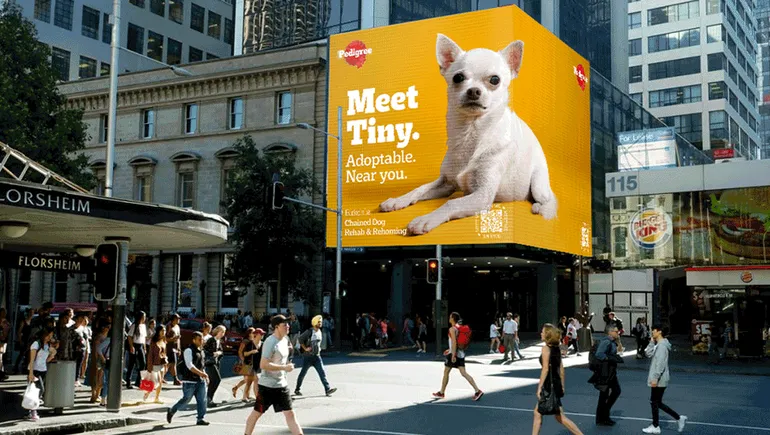
How choice architecture shapes consumer decisions
You’re craving a late-night snack. So, you head to your kitchen to grab something before you go to bed. What will you choose?
A lot of the time, it depends on what’s most accessible.
You’re more likely to eat healthier if nutritional foods are in easy-to-reach places. That’s why an article from the Today Show recommended keeping produce at eye level, and making cookies, chips, and cereal more difficult to locate. Research found that women who kept soft drinks, a box of cereal, or cookies on their counters weighed up to 26 pounds more than their neighbors. Women who had fruit bowls on their counters weighed 13 pounds less.
Environment impacts the decisions you make. Your actions are impacted by the way choices are presented, according to a concept known as choice architecture.
Making changes in how items are presented can make a significant difference in what consumers choose. Here is a closer look at a few ways in which choice architecture can lead to positive behaviors, better sales, and more.
Eating Healthier
Encouraging people to eat healthier is a popular application of choice architecture. One of the most notable examples of this in action took place in a study published by the American Journal of Public Health. Researchers implemented a color-coding system at Massachusetts General Hospital’s cafeteria (red = unhealthy, yellow = less healthy, green = healthy) and then increased the visibility of some green items, like bottled water.
Sales of red items decreased in both phases, and green items increased. The biggest changes were for beverages. Red beverages decreased by 27.9% and green beverages increased 13.6%. Bottled water increased 25.8% after several baskets were added throughout the cafeteria.
Similar changes can be found in the business world, according to researchers in Harvard Business Review, due to the $225 billion price tag companies pay because of poor health and obesity. Google’s cafes and kitchens have benefited from applying what’s known as the four Ps of behavior change.
- Process: Small “nudges” or changes in choices can direct employees toward healthier options. For instance, the best positions in a set of options are the first in a pair or the middle item in a set of three. Defaulting to a healthier option is best.
- Persuasion: Making healthier options more appealing is effective. Google created a “Vegetable of the Day” promotion and added trivia facts and colorful photos of the option. Those actions increased the number of employees trying the dish by 74%.
- Possibilities: The choices that are offered can influence behavior, but care must be taken to retain freedom of choice. One recommended practice is changing portion sizes. A Google microkitchen replaced loose M&Ms with individually wrapped packages, reducing the average serving by 58 percent.
- Person: Choice architecture can alter behavior in specific environments, but what about lasting change? “It is only through the person, however, that behavior can be influenced across contexts over time — and outside the workplace,” according to authors of the Harvard Business Review article. Interventions like goals, committing in advance, and establishing habits can help.
Encouraging Sales
Another major area where choice architecture is utilized comes in marketing. By applying some of the aforementioned principles to advertising, companies can increase sales.
The Marketing Society pointed out a popular example of extra choices when The Economist offered subscriptions to potential subscribers. The publication began offering just two choices: an online subscription for $59, and a print and online subscription for $125. Sixty-eight percent of people chose the cheaper, online-only subscription.
Then another offer was added, in the form of a print-only subscription for $125. That’s not a typo; $125 was the same price as the print and online subscription. Yet, the outcome changed. People now wanted to get the print and online subscription, which appeared to be a fantastic deal next to the print-only subscription at the same price. Eighty-four percent chose that and the remaining 16% opted for the online-only subscription.
What The Economist did is known as value anchoring. There was a clear difference in value between the two $125 subscriptions, which led customers to believe that they were getting a good price on their subscription for print and online.
There is a similar concept in marketing known as price anchoring. Often, companies present three levels of a product or service, such as silver, gold, and platinum offerings. Consumers often shy away from the most expensive option, but they don’t want the cheapest either. They react instinctively to the highest-priced option (the “anchor”) and then tend to compare that number to the next lowest figure, which can be perceived as a deal. For instance, after seeing a $200 price tag, $125 will always look better. The same principle applies for $80 and $55.
Other Applications
The applications for choice architecture are far-reaching. It’s likely a factor anytime choices are presented. Plus, there are ways choice architecture come in play in the most seemingly bizarre of circumstances.
At some men’s restrooms around the world, urinals have images of flies etched near the drains. The addition was designed to appeal to how men like to aim when relieving themselves, and apparently, it works. NPR reported that Amsterdam Airport Schiphol, spillage rates dropped 80%. Even when there’s seemingly no choice, a nudge from choice architecture was utilized to produce desired behavior.
An article from Behavioral Scientist examined other applications, such as countries’ organ donations policy adding a default option, credit cards lowering customers’ payments by presenting minimum-payment information to their statements, and physicians choosing less aggressive pain medications due to the way options were grouped. Optimizing choices can also lead to increased charitable giving. A study from the IZA Institute of Labor Economics found that offering a list of default charities doubled the fraction of donors and the revenue for charities.
Is Choice Architecture Ethical?
There are instances when nudging consumers can become unethical. For instance, if hospitals redesigned their cafeterias to showcase unhealthy, expensive food, then that would create an issue.
According to an article in the Yale Journal on Regulation, “It is reasonable to worry about nudges by government and to object to particular nudges, but not to nudging in general.” It added that avoiding choice architecture is impossible, and ethical abstractions like autonomy, dignity, and manipulation must be discussed in concrete practices. Monitoring possible ethical violations is accomplished through public scrutiny of nudges and the way choices are presented.
Choice architecture is inevitable and complex. Individuals who present choices have the opportunity to influence behavior, which means that business leaders can enhance marketing collateral as well as ways to impact employee productivity and happiness. An online MBA can help you navigate those types of more, providing you with the knowledge and skills needed to become a successful business leader.
William Jessup’s program will help you develop a strong understanding of fields like marketing, accounting, and economics. There is no GMAT required, and the program features faculty members who are experts in their fields and have held positions such as CEOs, marketing directors, and vice presidents of finance. The university was ranked No.4 for “Best Value School” by U.S. News & World Report.





